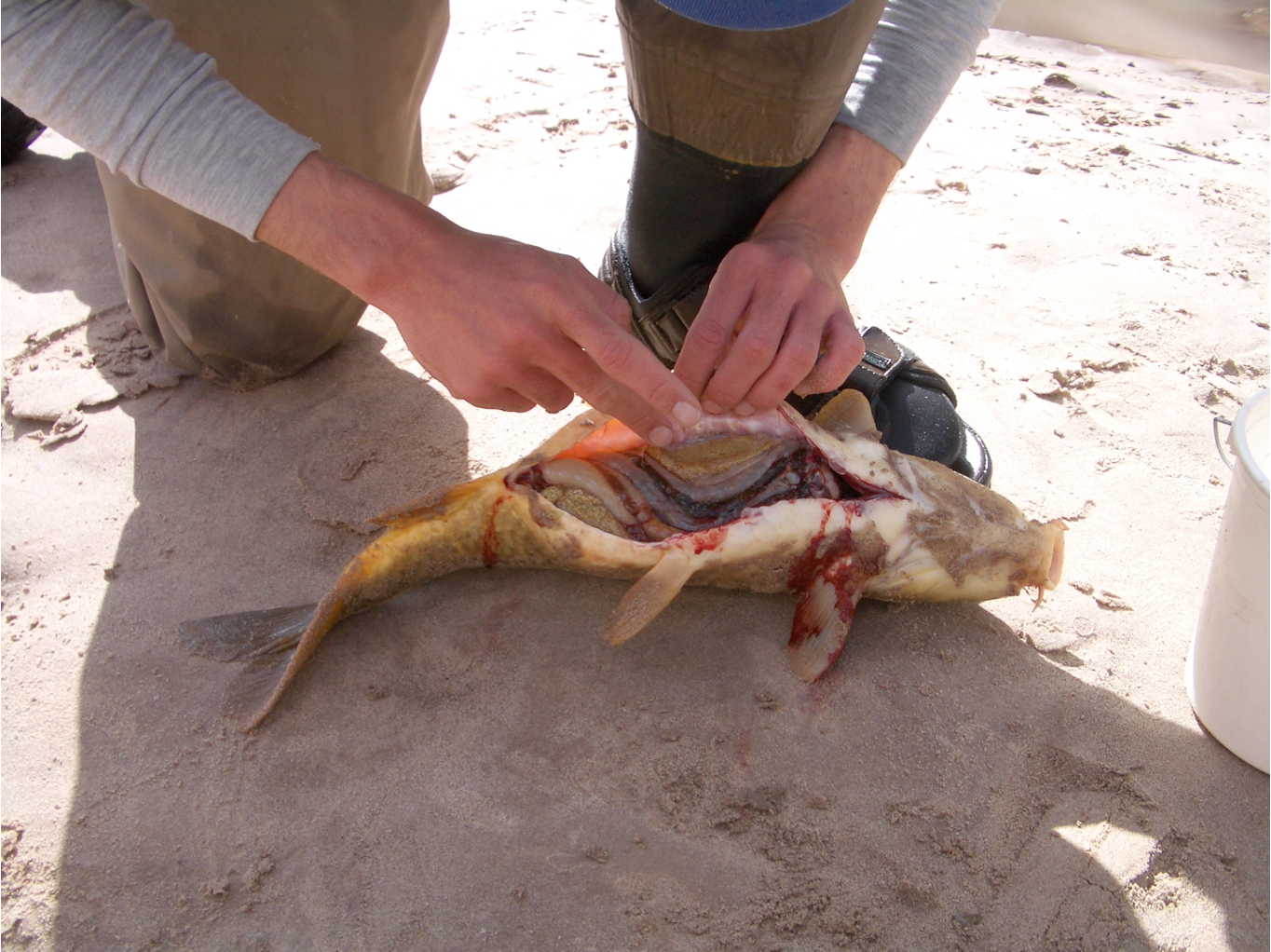Four mainstem nonnative fish, two channel catfish (Ictalurus punctatus) and two common carp (Cyprinus carpio), were captured using hook-and-line during our research expedition down the Grand Canyon in March, 2005. The stomachs of the fish were removed and their contents analyzed. The two species of fish appeared to exhibit divergent methods of feeding, despite having very similar organisms in their stomachs. Catfish displayed a selective, possibly mid-water picking strategy, while carp appeared to be consuming benthic substrates with their prey.

One common carp was caught near sunset in a small eddy near Bass Camp at river mile 108 on March 21. It was male, measured 370 mm standard length (SL) and exhibited spawning colors. Identifiable stomach contents included aquatic Coeloptra (beetles), one oligochete, many pebbles, and detritus, among other benthic inverts. The presence of numerous pebbles indicates this fish was probing substrates for food, as would be expected for this species.
The second common carp was caught near the mouth of the backwater at river mile 137, which was at the separation point of the eddy that created the site’s sandbar. The carp was female, 405 mm in length (standard length), and displayed spawning colors. Her ovaries made up approximately 50% of her abdominal cavity by volume. Gut contents were comprised of 95% algae and 5% a mix of detritus and aquatic invertebrates. The invertebrates that were identifiable were in the order Diptera, except for one large Gammarisk amphipod and one oligochete.
Such an abundance of algae in this fish’s stomach is odd considering the turbidity of the water, and, thus, poor conditions for algal growth. The fish was likely feeding somewhere in the water fluctuation zone over a stable substrate, as this would be the only place besides a tributary where algae could persist in this reach of the Colorado River with the turbidities present at the time of our sampling. It is possible that the fish was more interested in eating the animals living within with the algae than it was in consuming the algae itself. The backwater at river mile 137 presented conditions suitable for algal growth, but none was observed there.
The two catfish, standard lengths 280 and 273 mm, were captured in an eddy at river mile 180 just downstream of Lava Falls on March 25. Identified stomach contents were six seeds, one terrestrial caterpillar, three larval stages of Trichoptera (caddis flies), two larval stages of Diptera (flies), and various detritus. Benthic substrates were notably absent in the channel catfishes’ stomachs, indicating either a great ability to pluck individual food items out of an extremely turbid and dark lower water column, or a great ability to sort food from substrate.
Common carp and channel catfish were the only species of fish collected by hook-and- line on the mainstem of the Colorado River during our visit to the Grand Canyon. These fish are ecological generalists and have contributed exceedingly to the demise of the native fauna (Campos 2005). Their ecological plasticity is reflected in the diversity of diet items in these stomach samples. Despite an apparently high degree of diet overlap, both species of fish appear to be separating ecological niches by feeding in different zones: common carp on and within the bottom and channel catfish in the water column just above the bottom.
REFERENCES
Campos, B.R. 2005. “The evolution, demise, and restoration of the native fishes of the lower Colorado River.” In. J. Mount, P. Moyle and C. Hammersmark (eds.). Ecogeomorphology of the Grand Canyon and its Tributary Streams. Davis, CA.
